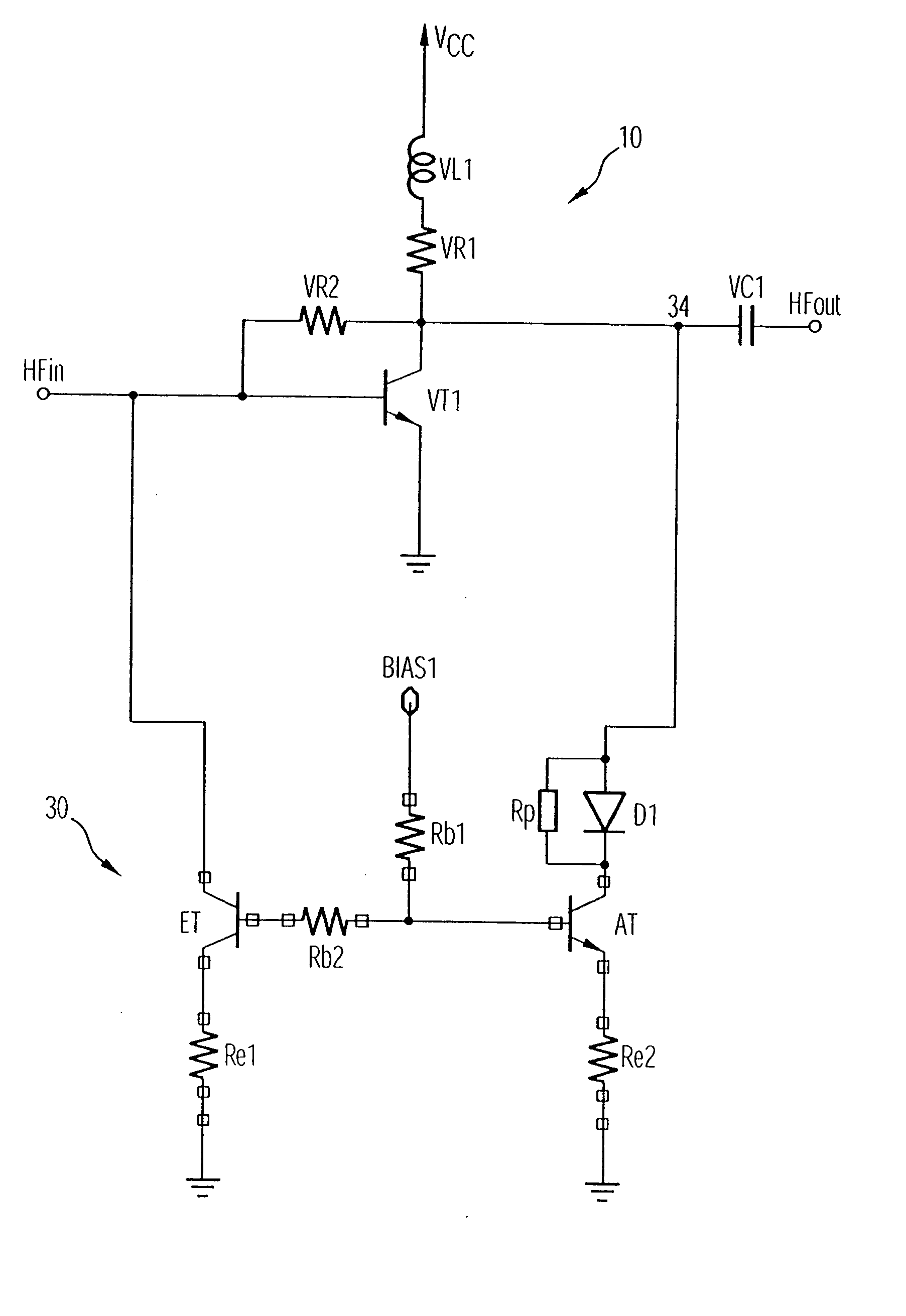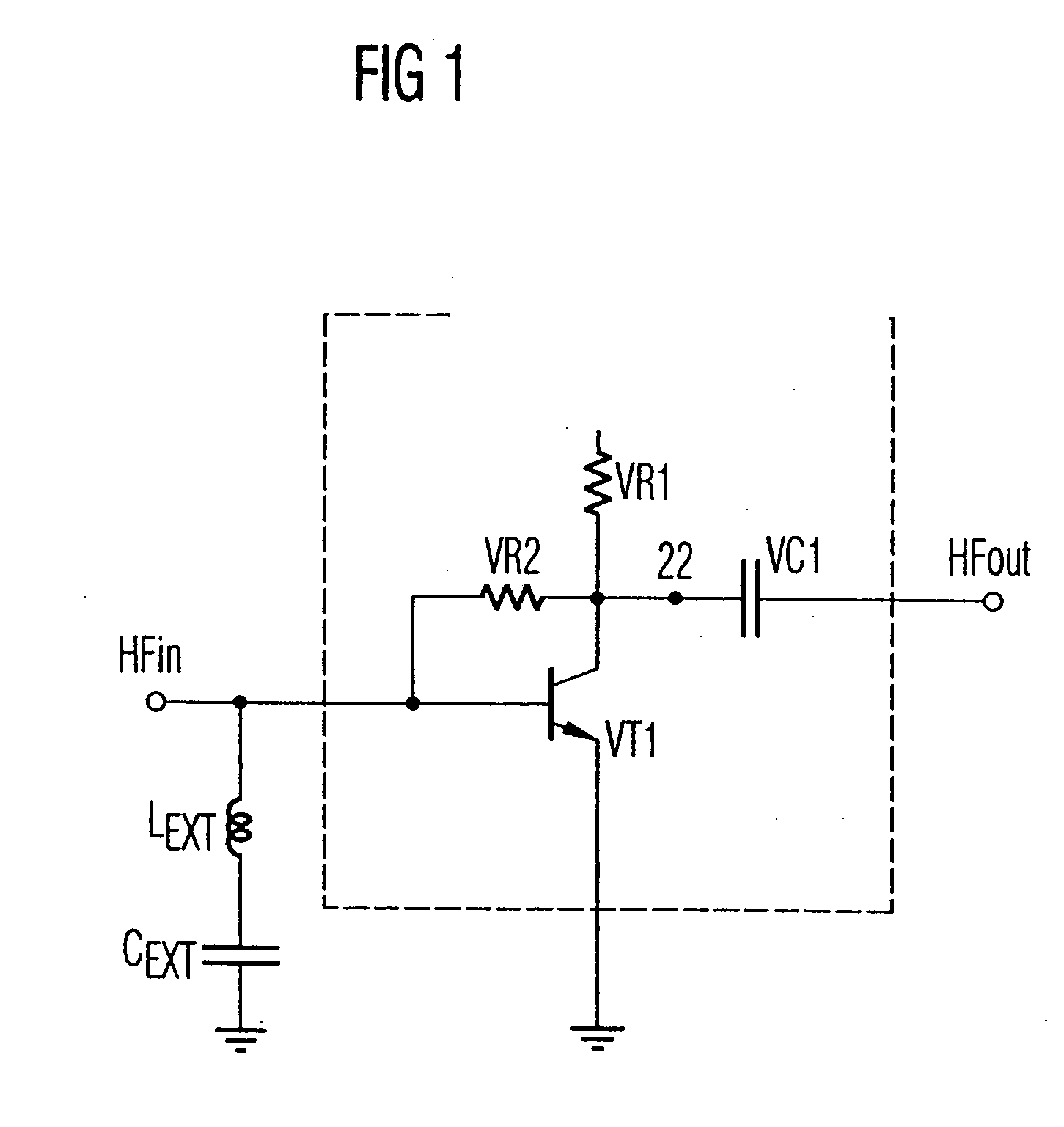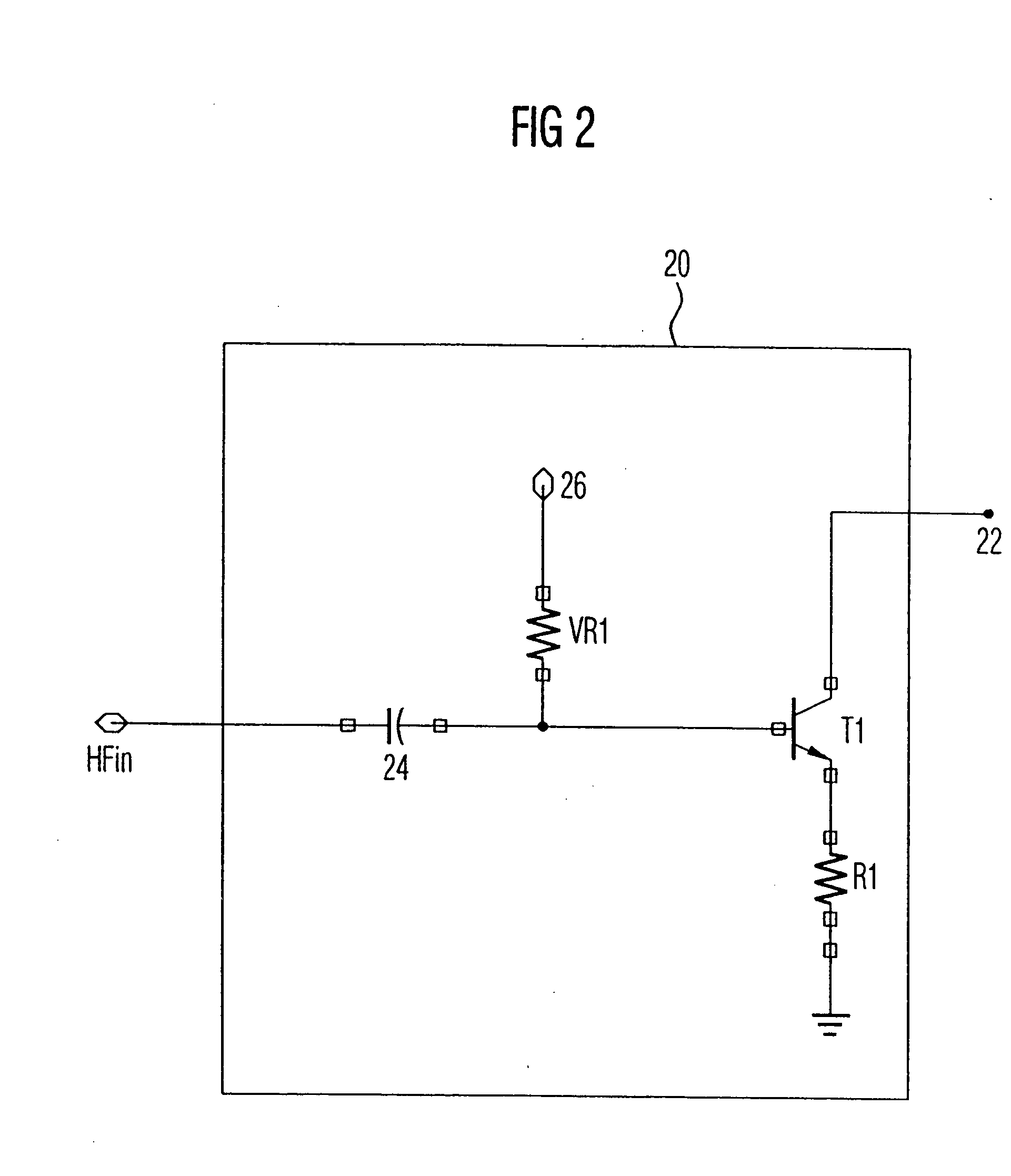Amplifier circuit with active gain step circuit
- Summary
- Abstract
- Description
- Claims
- Application Information
AI Technical Summary
Benefits of technology
Problems solved by technology
Method used
Image
Examples
Embodiment Construction
[0026] With reference to FIGS. 3 and 4, a first embodiment of an inventive amplifier circuit will be discussed below in more detail, wherein first a secondary stage amplifier is addressed with reference to FIG. 3.
[0027] The secondary stage amplifier 30 comprises an input bipolar transistor ET and an output bipolar transistor AT. The input terminal of the input bipolar transistor ET is connected to the RF input HFin. The emitter terminal of the input bipolar transistor ET is connected to a reference potential, in the shown embodiment ground, via a resistor Re1. The collector terminal of the output bipolar transistor AT is high frequency-coupled to the RF output RFout, in the illustrated embodiment via a diode D1 and a decoupling capacity C1. Further, the collector terminal of the output bipolar transistor AT is connected to a supply voltage terminal 32 via the diode D1, across which a supply voltage is applied, which operates the diode D1 in flow direction and provides the operating...
PUM
 Login to View More
Login to View More Abstract
Description
Claims
Application Information
 Login to View More
Login to View More - R&D
- Intellectual Property
- Life Sciences
- Materials
- Tech Scout
- Unparalleled Data Quality
- Higher Quality Content
- 60% Fewer Hallucinations
Browse by: Latest US Patents, China's latest patents, Technical Efficacy Thesaurus, Application Domain, Technology Topic, Popular Technical Reports.
© 2025 PatSnap. All rights reserved.Legal|Privacy policy|Modern Slavery Act Transparency Statement|Sitemap|About US| Contact US: help@patsnap.com



